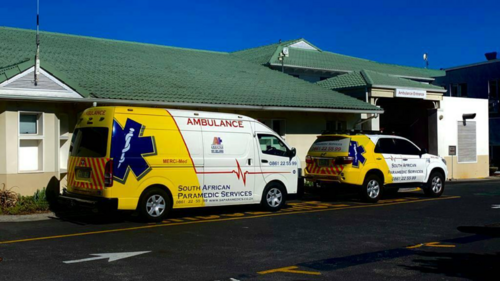News
Gauteng Health: Ekurhuleni Exhibits Lowest Ambulance Response Rate

Emergency response times for Priority 1 patients within Gauteng’s urban areas could be better, with only 56% of calls being answered within 30 minutes. This disheartening revelation comes from Gauteng Health and Wellness MEC Nomantu Nkomo-Ralehoko’s written response to queries by the DA’s Shadow MEC for Health Jack Bloom in the Gauteng Legislature as reported by IOL.
Also Read: Introducing the Elite Seven Finalists of Miss South Africa
Priority 1 cases encompass critically ill or injured individuals requiring medical attention to safeguard their lives. According to the MEC, the most dismal response rate is observed in Ekurhuleni, where merely 46% of life-threatening emergency calls receive a response within 30 minutes.
Response rates in other regions are as follows:
- City of Johannesburg – 52%
- City of Tshwane – 72%
- Sedibeng District Municipality – 62%
- West Rand District Municipality – 63%
Although the international standard dictates an 80% response rate for Priority 1 calls within 15 minutes, the Gauteng Health Department has abandoned this elevated benchmark. The department claims they no longer gather such data, citing revisions made to the 2020 National Indicators Data Set (NIDS). These revisions transformed the 2018 NIDS “P1 urban response under 15 minutes” into “EMS P1 urban response under 60 minutes.”
In 2019, it was asserted that 82.6% of P1 calls were answered in 15 minutes. However, this figure deteriorated to 70% within 30 minutes in 2020, subsequently surged to 94.6% in 2021 during the pandemic, yet plummeted to 50% in both 2022 and 2023.
Interestingly, this week, the department issued a press statement asserting an 88% response rate within 30 minutes. However, this claim is met with scepticism by Jack Bloom, who finds it contradictory to the information provided in the Health MEC’s official response and numerous accounts of fatalities occurring while waiting for ambulances that never arrived.
The department attributes the sluggish response times to service delivery protests, high-risk areas necessitating police escorts, assaults on paramedics, and workforce shortages. To mitigate delays caused by paramedic attacks, they assert investments in smart technologies like push-to-talk devices with live tracking for emergency calls, as well as panic buttons and vehicle cameras.
While acknowledging the potential benefits of technological advancements, Bloom emphasizes that Emergency Management Services (EMS) is plagued by mismanagement and corruption that must be rectified to expedite response times in critical situations.
Also Read:
Follow us on Google News
Photo: Facebook / @South African Paramedic Services






















